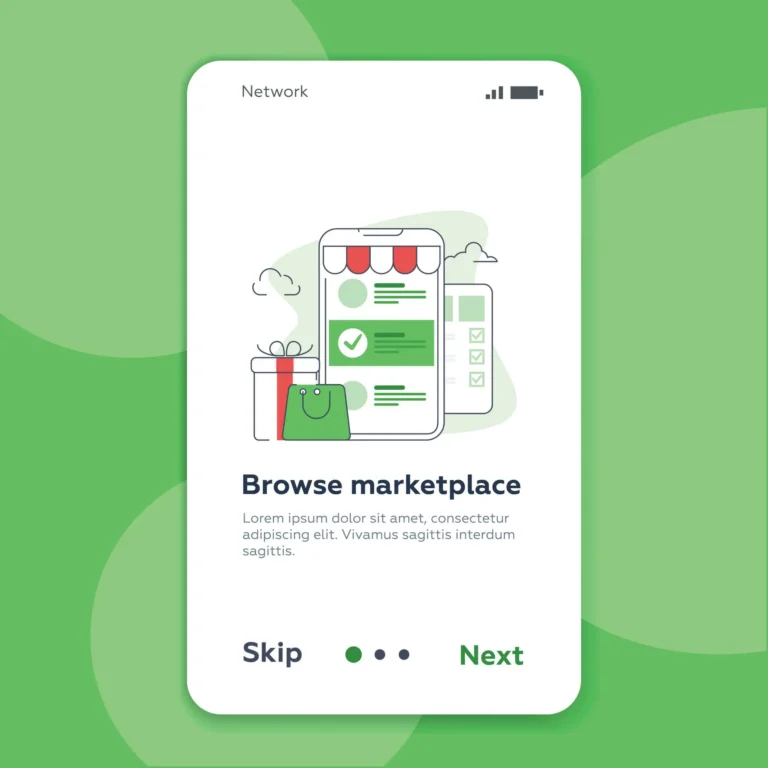
How health tech companies can build trust and drive engagement through effective UX design
In health tech, where trust is paramount and user expectations are growing, an effective UX strategy is essential. Whether users are patients, healthcare providers, or administrators, they expect a seamless, intuitive, and secure experience.
That’s where a strong UX strategy for health tech comes into play. It’s about building trust, simplifying complex information, and ensuring that users feel confident and supported in every interaction.
This article dives into practical tactics that health tech companies can use to drive digital engagement and foster meaningful connections. From creating a user-centered digital profile to leveraging data for ongoing improvements, these strategies will help health tech companies meet user needs effectively and responsibly.
Establish a user-centric digital profile
For health tech, setting up a user-centered digital profile is more than a “nice-to-have”—it’s essential for building credibility. A UX strategy for health tech needs to account for how users interact with sensitive information, how they access resources, and how easily they can find answers to pressing health questions. Establishing a digital profile that reflects empathy, clarity, and accessibility is crucial to forming a trustworthy online presence.
How Teledoc puts users first
The telehealth platform Teladoc is a great example of a user-centric profile. Teladoc’s homepage is straightforward, with clear options for booking appointments, reviewing provider information, and managing health data—all laid out in a way that makes users feel in control of their health journey. This intuitive design signals to users that Teladoc understands their needs, enhancing trust and reducing friction right from the start.
The principle here is simple: prioritize usability, accessibility, and secure navigation to build a foundation of trust—an indispensable part of a successful UX strategy for health tech.
Leverage research to understand patient and provider needs
Health tech products serve diverse users, from patients with different digital literacy levels to healthcare providers managing complex workflows. A UX strategy for health tech must be grounded in research to fully understand these varied needs. This involves gathering insights through methods like journey mapping, user interviews, and surveys to create a complete view of the user experience.
For example, a health tech company providing a patient portal might find through research that users are frustrated by the difficulty of managing multiple appointments and viewing test results. Understanding this friction allows the company to prioritize UX improvements that make appointment scheduling more intuitive, reduce navigation steps, and display important health information clearly.
In addition, research helps health tech companies identify specific needs of providers, who often juggle multiple tasks in a fast-paced environment. Simplifying administrative workflows through UX design can enhance usability for providers, reducing burnout and improving care delivery.
How MyChart balances feedback with design
Let’s look at the health app MyChart.
MyChart frequently gathers user feedback to refine its patient portal. By conducting regular interviews and usability testing, MyChart identified that users were struggling to find test results and manage appointments. Based on these insights, they prioritized improvements in navigation and appointment management, making it easier for patients to access vital information with fewer clicks.
Doximity’s focus on provider workflows
Another example comes from the provider side. A company like Doximity, a professional network for doctors, understands that physicians need fast, reliable access to patient communication tools and updates.
Doximity’s UX research revealed that providers preferred an interface that emphasized quick access to messages and notifications, leading them to design a streamlined experience tailored to medical professionals’ workflows.
Use visual content to simplify complex health information
Health information is inherently complex, often involving medical terminology and intricate data that can be overwhelming for users. An effective UX strategy for health tech incorporates visual elements to help users understand these complexities quickly and intuitively.
Visual aids—such as interactive charts, infographics, and explainer videos—are incredibly effective for delivering information that’s easy to digest. And it’s engaging!
How GoodRX and Healthline use visuals
The GoodRx app simplifieswhat can be a confusing process by using visuals with prescription pricing.
By displaying options side-by-side in easy-to-read graphics, users can quickly compare prices and make informed decisions about their medications. This approach reduces cognitive load, helping users focus on their choices rather than deciphering complex pricing data.
Here’s another example: health education platforms like Healthline use infographics and explainer videos to break down topics like medication side effects or chronic condition management. These visuals make information easy to digest, ensuring that users of all literacy levels feel informed and empowered—an essential goal in a UX strategy for health tech.
By simplifying complex topics, health tech companies not only enhance user experience but also position themselves as trustworthy and accessible resources for their audience.
Implement interactive elements to engage patients and providers
In health tech, user engagement goes beyond scrolling through content. It’s about having a meaningful interaction with information that ultimately impacts health outcomes. A strong UX strategy for health tech can include interactive elements like live Q&A sessions with healthcare experts, virtual consultations, or feedback forms for continuous improvement.
For example, telehealth platforms often use live video sessions to connect patients with doctors, allowing real-time interaction that feels personal and supportive.
Some health platforms also offer interactive tools like symptom checkers or health risk assessments, which provide users with personalized insights.
How Calm uses interactive elements
The mental health app Calm integrates interactive meditation sessions that users can join live or access on demand. These sessions encourage users to engage directly with the app, personalizing their experience and adding value to their wellness journey.
For health tech companies, offering similar interactive features, like live health chats or virtual consultations, can build stronger connections and foster user loyalty.
WebMD’s symptom checker allows users to interact
Another great example is WebMD’s symptom checker, which allows users to input symptoms and receive potential diagnoses. This feature engages users actively, making them feel in control of their health while receiving actionable insights.
These interactive experiences build engagement and foster trust by letting users feel like active participants in their healthcare journey. This approach not only boosts user satisfaction but also contributes to better health outcomes — a win-win for both patients and providers.
Maintain consistency in brand and messaging to build trust
In health tech, consistency is crucial for building credibility. Users rely on health platforms to provide accurate, trustworthy information, so it’s essential that messaging remains consistent across all channels.
This includes everything from website content to social media and email communications. Consistent messaging reinforces trust and ensures that users know what to expect every time they engage with your brand.
How Mayo clinic builds trust
Mayo Clinic is a great model for brand consistency. Their tone, which emphasizes integrity and care, is uniform across their website, mobile app, and social media. A cohesive approach like this makes users feel familiar and comfortable with their resource. It also reinforces the organization’s reputation as a reliable source of health information.
For health tech startups, creating a brand guide that defines tone, style, and key messaging helps ensure consistency. Whether users are reading a blog post, interacting with a chatbot, or using a mobile app, they should feel the same sense of reliability, which is critical to a strong UX strategy for health tech.
Gather analytics to continuously improve UX
Finally, no UX strategy for health tech is complete without a data-informed approach to ongoing improvement. Analytics provide insights into user behavior, helping health tech companies identify pain points, monitor engagement, and make adjustments based on actual user needs.
Metrics like drop-off rates in appointment booking flows, time spent on educational resources, or common navigation paths can reveal where improvements are needed.
How Headspace uses analytics
For example, the fitness and wellness platform Headspace uses analytics to monitor user engagement with its meditation and mental health content. By tracking completion rates and user feedback on specific courses, Headspace can adjust content length or introduce new topics that resonate more with users. These insights allow Headspace to refine its user experience, making it more aligned with user needs and more engaging overall.
How Peleton tracks popular classes
Another example comes from the fitness app Peloton, which tracks engagement with live and on-demand classes. By monitoring which types of classes are most popular, Peloton tailors its offerings to user preferences, continuously improving engagement and satisfaction.
Health tech companies can apply similar methods by tracking patient behavior, such as appointment scheduling frequency or the use of telehealth features, to optimize the UX and meet users’ evolving needs.
This data-driven approach enables health tech companies to adapt their UX to meet evolving user needs, which is crucial in such a dynamic field. Regular analysis and refinement are vital to maintaining relevance and optimizing the overall user experience.
Conclusion: The impact of a strong UX strategy on health tech success
A successful UX strategy for health tech is about more than functional design; it’s about building trust, enhancing engagement, and empowering users to make informed health decisions. By focusing on understanding user needs, simplifying complex information, and maintaining a cohesive digital presence, health tech companies can create a truly user-centered experience.
Investing in UX strategy, research, and design helps health tech companies establish meaningful connections with users, ultimately fostering trust and loyalty. In an industry where reliability and support are essential, a user-centered approach isn’t just beneficial—it’s vital.











